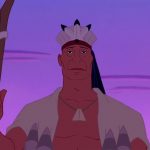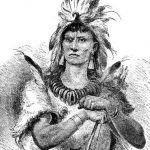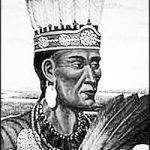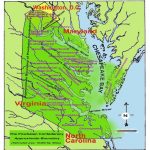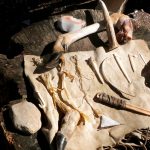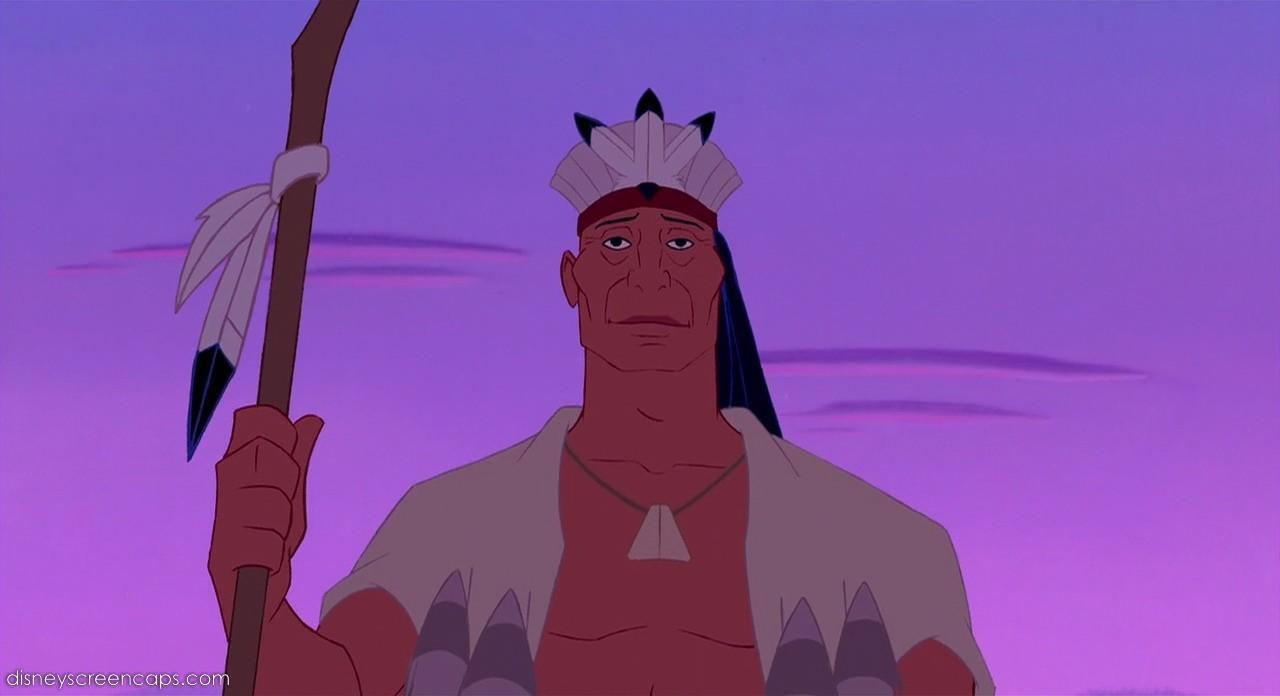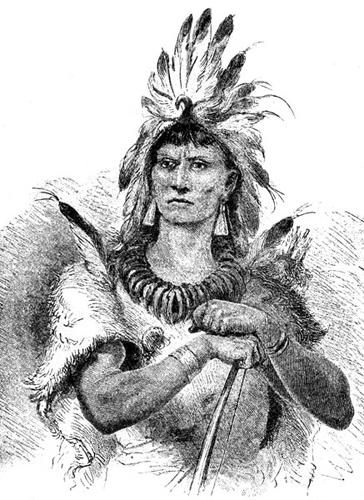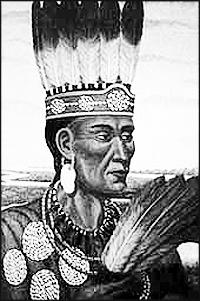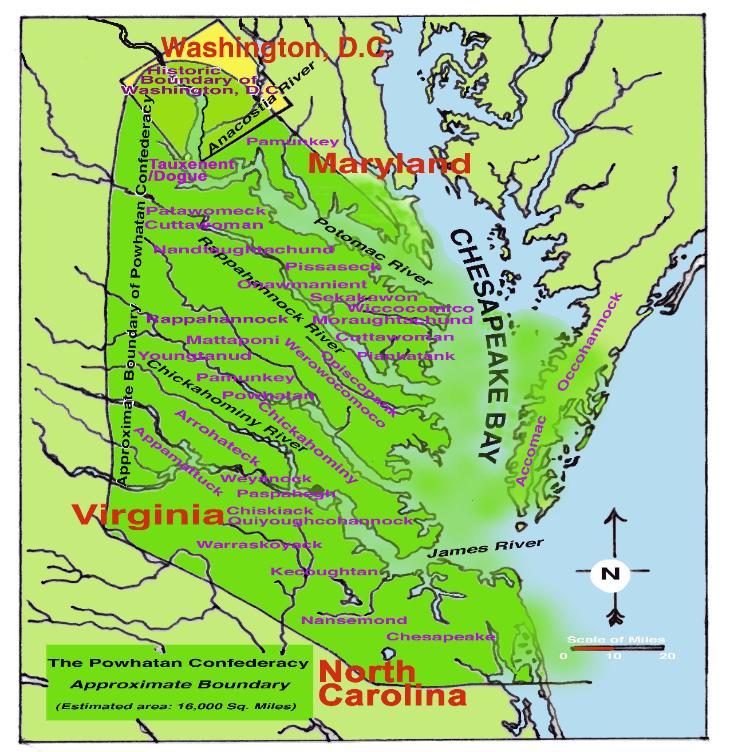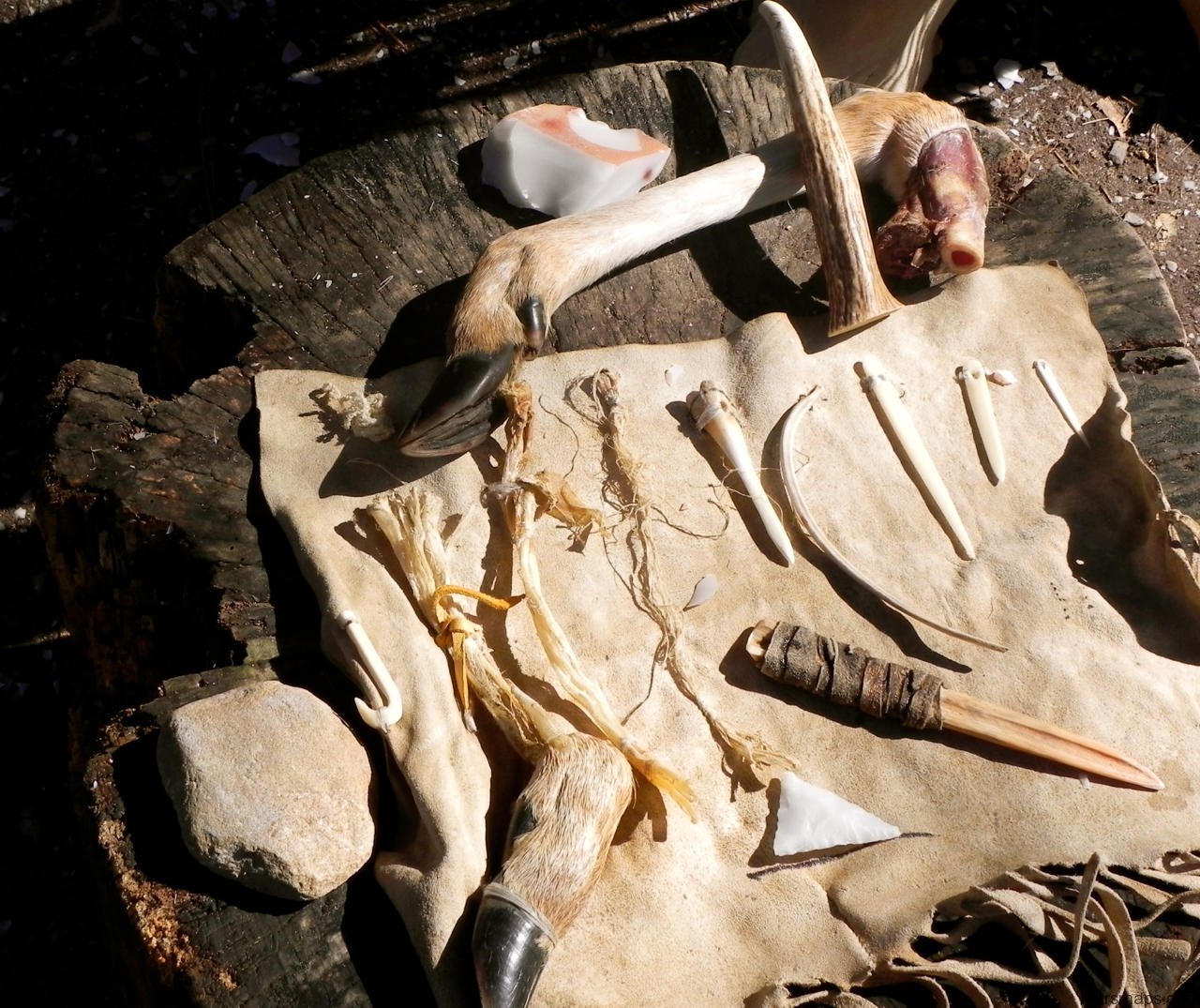Powhatan was the most powerful man in eastern Virginia, or Tsenacommacah, when Jamestown was founded there in 1607. Powhatan was the father of
Pocahontas and the brother of Opechancanough, leader of the 1622 and 1644 attacks on English Virginia.
The term Powhatan may also refer to the Native Americans under the rule of Powhatan, the Powhatan Confederacy, or the specific village of Powhatan,
near the site of present-day Richmond, Virginia. Most of the information we have concerning Powhatan and the related Native Americans of latesixteenth-
and early-seventeenth-century Virginia comes from archaeological studies of the region and first-hand accounts left behind by the English.
Powhatan was born between 1540 and 1550. He inherited the inner coastal plain between the James and Mattaponi Rivers. Conservative estimates place
the number of people under Powhatan’s control between 13,000 and 15,000. Powhatan was born in the village that came to be known as Powhatan.
Powhatan expanded his inheritance through conquest, taking villages along the James and York Rivers. In the years just prior to 1607, Powhatan was still
conquering tribes farther to the east and north. His territory eventually stretched over much of eastern Virginia, based on the James, York, and
Rappahannock Rivers, and included coastal tribes such as the Chesapeakes. Powhatan tried to persuade neighboring villages by intimidating them with
the threat of violence. If that failed, he was willing to use force to accomplish his goals. He is known to have conquered the Kecoughtan people, at the
mouth of the James River, by 1596 or 1597. Power appears to have been more concentrated in Powhatan than was common among other Algonquianspeaking
tribes, though he did possess the same kind of authority the English expected of a king, or that the Native American communities of the
Southeast expected of their chiefs.
Politically, Powhatan ruled over about thirty separate villages; though all of the villages were linguistically similar, there were significant local variations in
custom and culture. Each village had its own werowance, who governed with Powhatan’s approval. If the local werowance ran afoul of Powhatan, he could
be replaced with a more suitable man, in some cases a brother or son.
In addition to the political power Powhatan held over his various subjects, he was often personally connected to the villages. He solidified his hold on the
region by marrying women from the various villages. Typically, Powhatan would keep a wife until she bore him a child. The wife and child would then
return to their village of origin until Powhatan called for the child some years later. Powhatan was said to have a dozen temporary wives at once, and
about a hundred by the time the English arrived at Jamestown. Powhatan’s empire had been expanding throughout his adult life. The arrival of the English
stemmed this tide and began a gradual reversal of the process.
When the English came to the peninsula between the James and York Rivers in 1607, they settled on the eastern edge of Powhatan’s territory. This
provoked two responses from the Powhatan people, who were evidently interested in determining the motives of the English and their military strength. A
small party of English colonists ventured up the James River to Powhatan; they were warmly received by Parahunt, Powhatan’s son, and seemed to
establish friendly relations through the exchange of gifts and trade goods.
The powerful Algonquin chief Powhatan portrayed here in Captain John Smith’s Generall Historie of Virginia headed a confederacy of native tribes in
the Virginia Tidewater when English settlers established Jamestown in 1607. (Brown Brothers, Sterling, Pennsylvania)
At roughly the same time, 200 men had attacked the fort at Jamestown, killing ten colonists. Further minor assaults occurred over the span of a week. A
tentative peace was reached when the Powhatan claimed that they had not made the attacks and that they could stop the aggressors. John Smith was
captured and adopted into Powhatan society through a complex series of rituals, one of which involved being rescued from death by Pocahontas, which
was probably more of a performance than an actual near-execution.
Through the bond formed with John Smith, the military leader of the Jamestown colony, Powhatan believed he had adopted Jamestown as another
subordinate village; in exchange for being allowed to remain in Virginia, the English would provide Powhatan with two cannons and a grindstone. The
English did not understand the terms of the exchange and never provided the cannons or stone; they had their own ideas about colonization and
conquest, most of which ran at cross-purposes with Powhatan’s plans. Moreover, shortly after his adoption, John Smith left Virginia and Powhatan faced a
new colonial government, one that understood even less clearly the terms of the agreement between Powhatan and Smith.
In 1608, Smith returned to Virginia, and in October, Powhatan demonstrated again his feelings of superiority toward the English. King James I had sent
Powhatan some gifts and a crown, which Powhatan was invited to Jamestown to receive. Powhatan’s alleged response was
if your king have sent me presents, I also am a king, and this [is] my land. Eight days I will stay to receive them. Your father is to come to
me, not I to him; nor yet to your for fort: neither will I bite at such a bait.
The English ended up bringing the gifts to Powhatan, but problems arose when Powhatan was supposed to kneel to receive the crown. He steadfastly
refused to submit to the English, and it was only by force that the English were able to bend Powhatan enough to place the crown on his head. Although
English recorders speculated that Powhatan did not understand the importance of the crown or of kneeling to receive it, the more likely scenario is that
Powhatan understood precisely what was going on and wanted no part of it.
Powhatan’s problems were compounded by the fact that English settlements began to expand into the James River valley in 1610. Although Jamestown
was weak and Powhatan could have wiped out the colony if he had chosen to do so, he did not perhaps recognizing that the English could provide
valuable assistance against other villages that Powhatan wanted to control. Jamestown also began to receive regular shipments of supplies and people
from England.
The expansion of the colony was cause for alarm to Powhatan, and the first Anglo-Powhatan War, which lasted from 1610 to 1614, did little to slow the
spread of the English into Powhatan’s territory. Scholars have debated whether the actions of the Powhatan and the English actually constituted a state of
war. It may be more accurate to say that the Anglo-Powhatan relationship soured and that both parties began to behave more aggressively, weakening
the chances of any lasting peace between the two groups.
In 1610, Powhatan’s personal life was also in crisis; he had apparently developed serious feelings for one of his wives and was refusing to send her and
his child away, causing a small political incident. Hostilities between the English and the Powhatan ceased temporarily when Powhatan allowed his
daughter Pocahontas to marry John Rolfe, a Virginia planter.
In the long run, the arrival of the English, their refusal to play by Powhatan’s rules, and their eventual ability to feed themselves spelled disaster for
Powhatan. The world into which he had been born was rapidly changing, and his people began to look elsewhere for answers. Opechancanough, his
brother, assumed practical leadership of the Powhatan people, and Powhatan remained chief in title only.
The year 1617 brought more bad news. Pocahontas had died in England, and an epidemic, perhaps smallpox, wiped out many of the Powhatan. Retiring
from public life, Powhatan died a year later in 1618. He had consolidated his power over most of eastern Virginia by the start of the seventeenth century
but had watched his control slip away when he could not control the pace of English settlement.
Matthew Jennings
See also: Jamestown; Native American-European Relations; Native Americans; Opechancanough; Pocahontas; Powhatan
Confederacy; Virginia; Virginia (Chronology).
Bibliography
Gleach, Frederic W. Powhatan’s World and Colonial Virginia: A Conflict of Cultures. Lincoln: University of Nebraska Press, 1997.
Rountree, Helen C. Pocahontas’s People: The Powhatan Indians of Virginia Through Four Centuries. Norman: University of Oklahoma Press, 1990.
Rountree, Helen C. The Powhatan Indians of Virginia: Their Traditional Culture. Norman: University of Oklahoma Press, 1989.
Powhatan c. 1540–1618 Photo Gallery
Maybe You Like Them Too
- Top 10 Islands You Can Buy
- Top 10 Underrated Asian Cities 2023
- Top 10 Reasons Upsizing Will Be a Huge Travel Trend
- Top 10 Scuba Diving Destinations
- The Best Cities To Visit in The World

